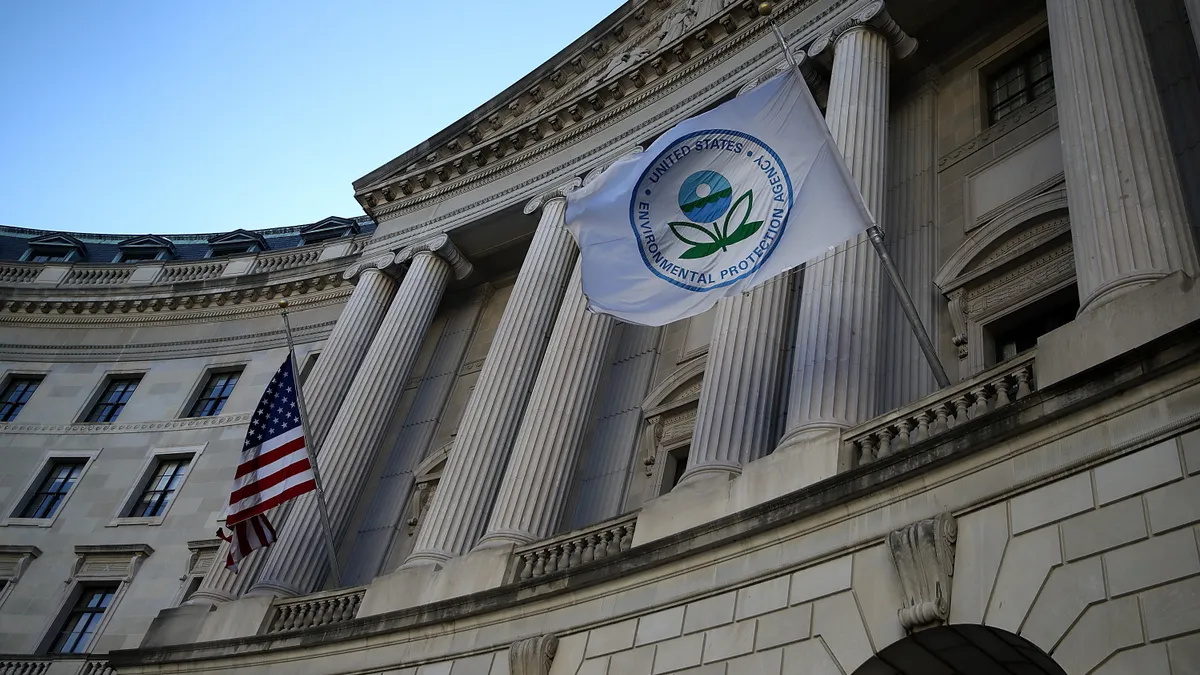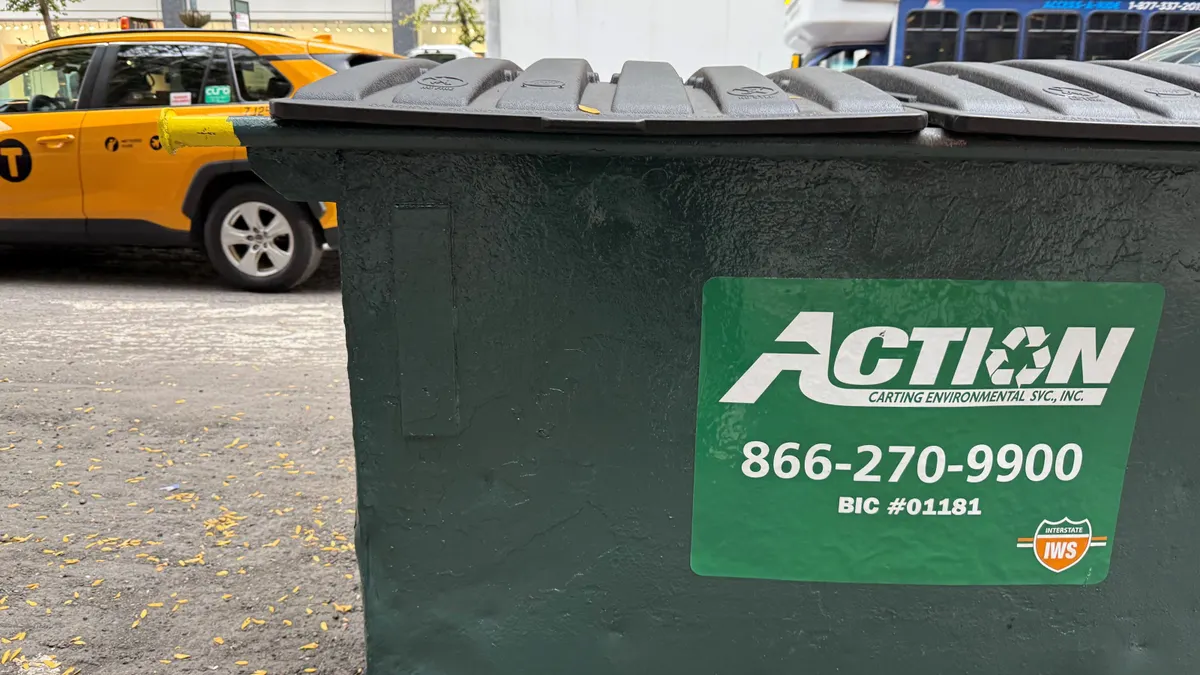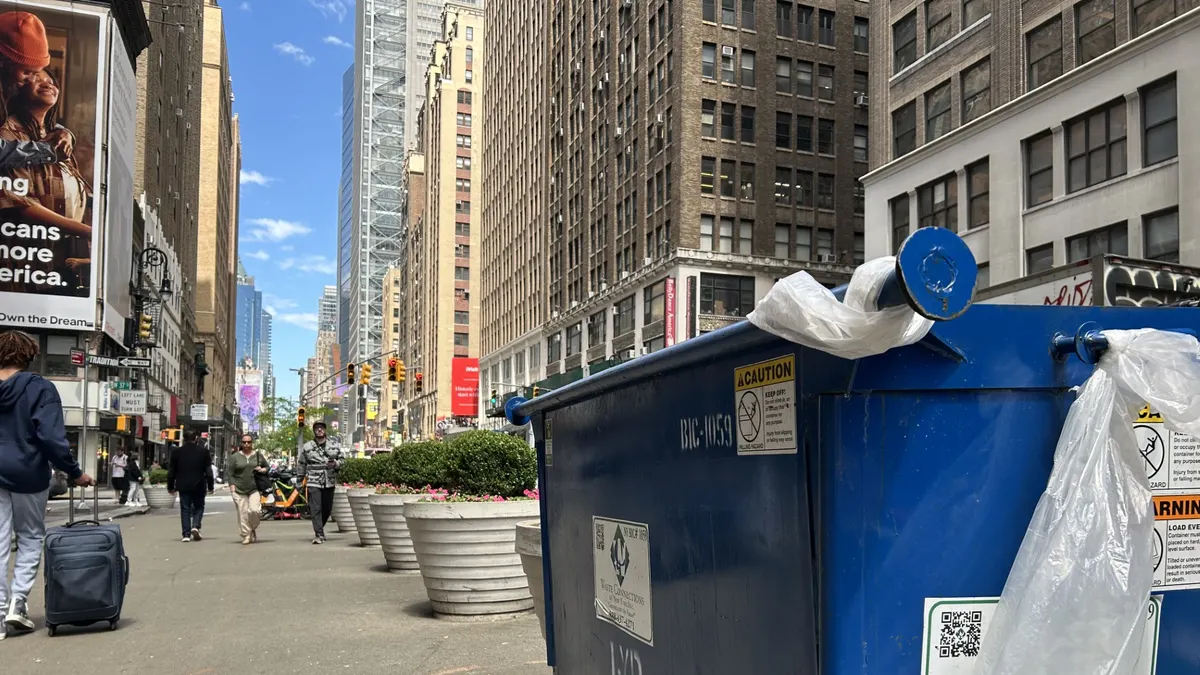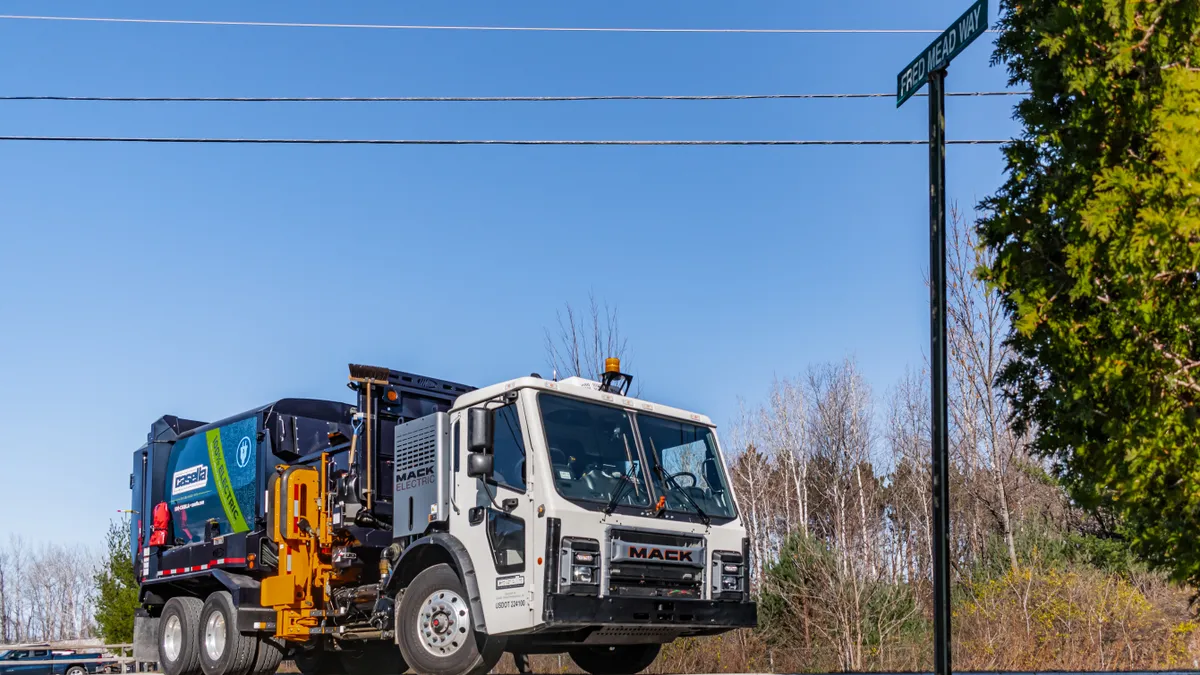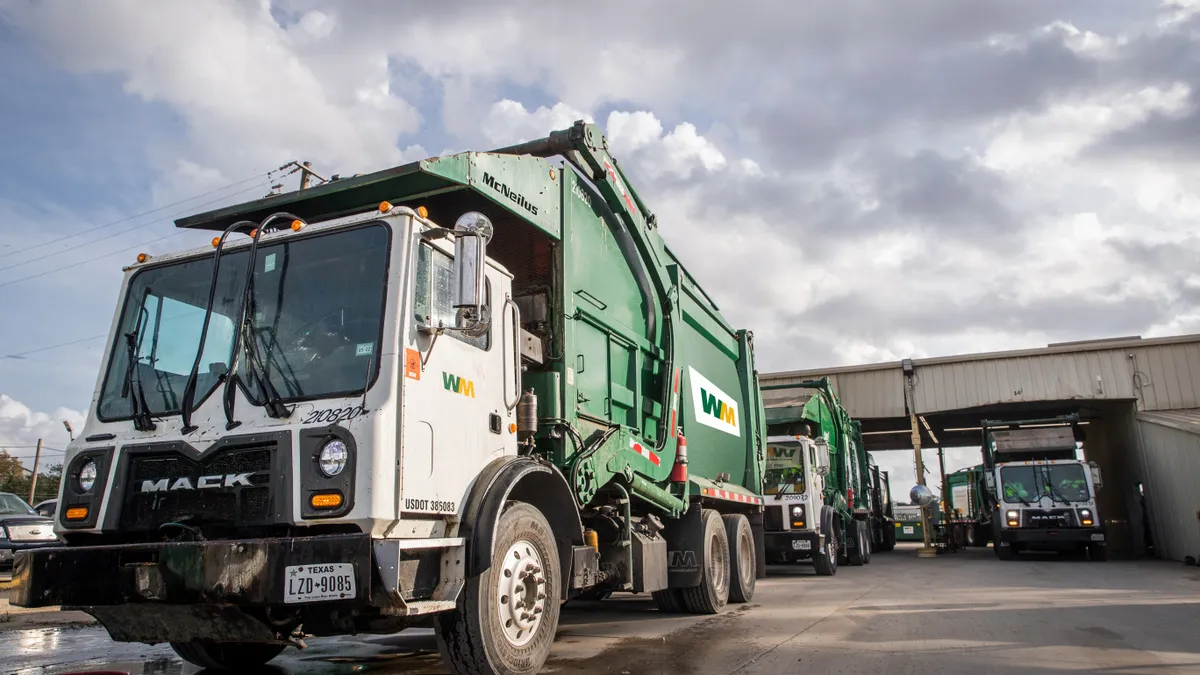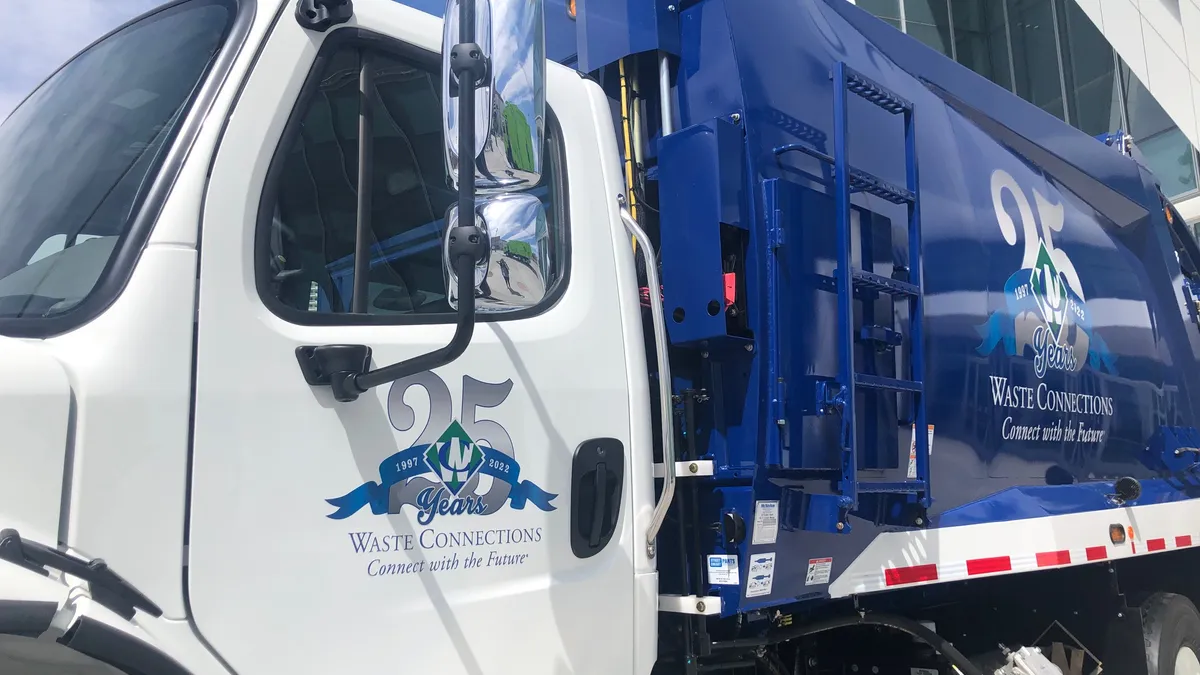As the government shutdown — the longest in U.S. history — surpasses the one-month mark, some in the waste, recycling and manufacturing sectors say they’re concerned about key timelines for federal programs and services that affect their industries.
Notable safety regulations, including progress on a federal heat standard, may be up in the air, while approval of certain chemicals needed for manufacturing have been stalled, industry groups say. Some permitting processes have also been delayed, adding costs to major construction projects, said Kristyn Oldendorf, senior director of public policy and communications at the Solid Waste Association of North America.
Meanwhile, some federal workers responsible for advancing key waste, recycling or air quality programs and grants have been furloughed. At the U.S. EPA, for example, about 90% of the workforce is currently on leave.
This will affect overall permitting and regulatory processes even after the shutdown is over, Oldendorf said in an email. “Delays to new regulations being finalized may cause uncertainty and create difficulties as operators are trying to plan in advance for budgets and compliance planning,” she said.
A number of federal workers are also at risk of being laid off during the shutdown, though recent court cases seek to prevent the Trump administration from carrying out such layoffs, according to AFGE, a union representing EPA workers. Several labor unions announced a preliminary injunction from a federal court in California last week in an effort to prevent the job losses.
The EPA did not respond to questions about the status of personnel or specific programs, instead stating in an email to Waste Dive that the agency has been “intentional and aggressive in establishing a structure to ensure EPA is focused on statutory obligations and Presidential priorities, not the overreach of the previous administration.”
The agency added that there is “zero uncertainty at EPA about what we are working on and who is advancing these priorities” and blamed congressional Democrats for the continued shutdown.
Recycling grants still available, but related staff status unclear
Some key work continues during the shutdown, according to the EPA’s government shutdown contingency plan, including certain critical Superfund response work, emergency disaster assistance and some litigation.
The plan also promises to continue some activities “funded by unexpired appropriations from the Infrastructure Investment and Jobs Act,” also known as the Bipartisan Infrastructure Law.
In April, the EPA confirmed it would move forward with funding another round of Solid Waste Infrastructure for Recycling grants and Recycling Education and Outreach grants, which are both funded through the Bipartisan Infrastructure Law.
The agency previously said it would disburse a total of about $58 million in SWIFR grants to communities, states and territories. Applications are still due Dec. 12, according to the EPA’s website. The EPA has also opened the grant process for another $20 million in SWIFR grants meant for tribes and intertribal consortia.
However, some EPA personnel that manage the SWIFR and REO grants — along with other waste diversion programs — may lose their jobs during the shutdown, including about 28 workers in the Resource Conservation and Sustainability Division, both E&E News and The Hill reported.
EPA personnel did not respond to questions about the status of such SWIFR grants, their timelines or the employees responsible for working on grant disbursements.
The EPA disbursed the “remaining” REO funding in August, describing it as a $39 million “cooperative agreement” to the Consumer Recycling Education and Outreach Coalition. The group includes the World Wildlife Fund, ReFED, the Waste and Resources Action Programme, The Ad Council, the US Composting Council, and the Institute for Local Self-Reliance.
TSCA pauses could slow progress on chemical approvals
Other important programs are not listed in EPA’s contingency plan, including work under the Toxic Substances Control Act, the law that gives EPA the authority to screen new chemicals before they enter the market and mandate certain kinds of testing and reporting on such chemicals. The pause on TSCA work is snarling numerous manufacturing sectors, including plastics, said Ross Eisenberg, president of the American Chemistry Council.
“There are hundreds of chemicals that are caught in the queue over at EPA, including new chemicals and new products being brought to market that have to go through the Toxic Substances Control Act,” he said. “Some of them, frankly, have been languishing for years, and the longer the government is shut down, the longer it's taken to bring those new products to market.”
Eisenberg said some of these new products are more sustainable alternatives to existing chemicals, “so we're actually preventing some of those greener, cleaner chemicals from coming to market, because we're not able to get them through the TSCA process.”
Advocates urge continued focus on national heat standard
Rulemaking on a federal heat standard may also be up in the air due to the government shutdown, according to the National Council for Occupational Safety and Health, a worker safety advocacy group.
The Biden-era heat standard proposal aims to require certain employers to monitor for heat risks on job sites and provide drinking water, rest breaks and shade. The rule was undergoing an extended comment period before the government shutdown started, with a deadline of Oct. 30 listed on the rulemaking website.
Employers in numerous industries, including waste and manufacturing, are closely watching the rulemaking process, especially after the death last year of a Baltimore sanitation worker due to heat illness.
The Department of Labor did not immediately respond to questions about how the shutdown might impact the heat standard’s implementation process. The agency should resume work on the national heat standard, said Jessica Martinez, National COSH’s executive director, noting efforts to protect outdoor and indoor workers from “preventable illness and death” is critical as climate change contributes to rising temperatures in the U.S. and around the world.
In a statement, Martinez said ongoing furloughs for OSHA workers are also creating unsafe conditions in workplaces across the U.S. “Inspections are stalled. Fatality investigations are delayed. Rulemaking is frozen. The very agencies charged with keeping workers safe are now shuttered — or running on fumes,” she said.
Meanwhile, the Labor Department has not been affected by shutdown-related reductions in force layoffs the same way the EPA has, Bloomberg Law reported.
Agency reorganization could create future impacts
Overhauls of specific offices within the EPA are ongoing despite the shutdown, including at the Office of Air and Radiation and the Office of Land and Emergency Management, E&E News reported. OLEM, considered the agency’s main waste office, is merging with other offices to “strengthen oversight.”
EPA also is moving the agency’s scientific staff “directly into program offices as opposed to being siloed in the Office of Research and Development,” the agency said. But SWANA decried the EPA’s decision to eliminate the research office, saying the move “will significantly reduce scientific research and development which inform the creation of best practices and regulatory developments.”
Earlier this year, the EPA also closed several offices related to diversity, equity and inclusion initiatives, including the Office of Environmental Justice and External Civil Rights.
This story first appeared in the Waste Dive: Recycling newsletter. Sign up for the weekly emails here.


